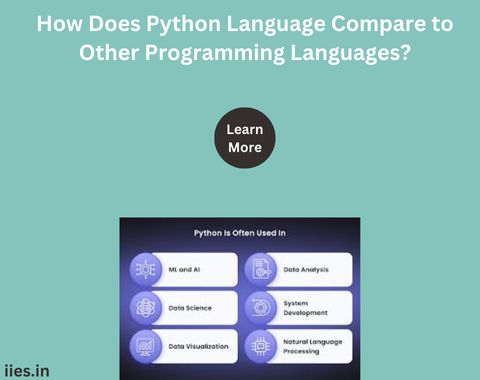
Python has cemented its place as one of the most popular and versatile programming languages. Its design philosophy emphasizes code readability and simplicity, making it a favorite among beginners and experienced developers alike.
However, to understand Python’s strengths and weaknesses, it’s essential to compare it with other prominent programming languages like Java, C++, JavaScript, and Ruby. This comparison sheds light on what makes Python unique and how it fits into the broader programming ecosystem.
Python’s syntax is often lauded for its readability and simplicity. It uses indentation to define code blocks, which enforces a clean and visually appealing code structure. Java, on the other hand, uses braces and has a more verbose syntax, which can sometimes make the code harder to read.
In terms of performance, Java generally outperforms Python due to its statically-typed nature and Just-In-Time (JIT) compilation. Python’s dynamic typing and interpreted execution make it slower, but for many applications, the difference in speed is negligible compared to the ease of development Python offers.
Python excels in fields like data science, machine learning, web development (with frameworks like Django and Flask), and automation. Java is commonly used in large-scale enterprise applications, Android app development, and in environments where performance and security are critical.
C++ is known for its steep learning curve due to complex syntax and concepts like pointers, memory management, and manual garbage collection. Python, conversely, is designed to be easy to learn and use, which makes it a popular choice for beginners.
C++ offers greater control over system resources and memory management, which can lead to superior performance, especially in system-level programming, game development, and applications requiring real-time processing. Python abstracts these details away, providing a higher-level approach that simplifies development but at the cost of some performance and control.
Both languages have robust ecosystems, but Python’s extensive libraries for data analysis, scientific computing, and machine learning (such as NumPy, pandas, and TensorFlow) give it an edge in scientific and analytical domains. C++ remains unmatched in areas requiring close-to-the-metal performance, such as game development engines (e.g., Unreal Engine) and performance-critical applications.
JavaScript is primarily a client-side scripting language used to create interactive web pages. With the advent of Node.js, JavaScript has also become a powerful server-side language. Python is a versatile language that can be used for both server-side web development and as a scripting language for various tasks, but it is not typically used for client-side scripting in web browsers.
Both Python and JavaScript have relatively simple syntax compared to languages like C++ or Java. However, Python’s syntax is often considered cleaner and more readable. JavaScript, with its asynchronous programming model (using callbacks, promises, and async/await), can be more complex to grasp for beginners.
Python’s community and support for scientific and analytic tasks are unparalleled, with frameworks like Django, Flask, and FastAPI for web development. JavaScript boasts a vibrant ecosystem for web development with frameworks like React, Angular, and Vue.js, making it indispensable for front-end development.
Python and Ruby share similarities in their high-level, dynamically-typed nature and focus on simplicity and productivity. Python emphasizes readability and explicitness, while Ruby embraces flexibility and the principle of “least astonishment,” making it more intuitive for some developers.
Both languages are popular in web development. Ruby on Rails is a powerful web framework that has influenced many other frameworks with its convention-over-configuration approach. Python’s Django framework is also highly regarded for its robust features and scalability.
Python generally has a larger user base and more libraries for a broader range of applications, particularly in data science and machine learning. Ruby’s performance is often criticized compared to Python, but it remains a strong choice for rapid web development and prototyping.
Python’s success can be attributed to its simplicity, readability, and versatility. While it may not always be the fastest language, its extensive libraries, supportive community, and ease of use make it a powerful tool for a wide array of applications. When comparing Python to languages like Java, C++, JavaScript, and Ruby, it becomes evident that each language has its own strengths and ideal use cases. Python’s unique balance of simplicity and capability allows it to hold a prominent place in the world of programming.
Indian Institute of Embedded Systems – IIES